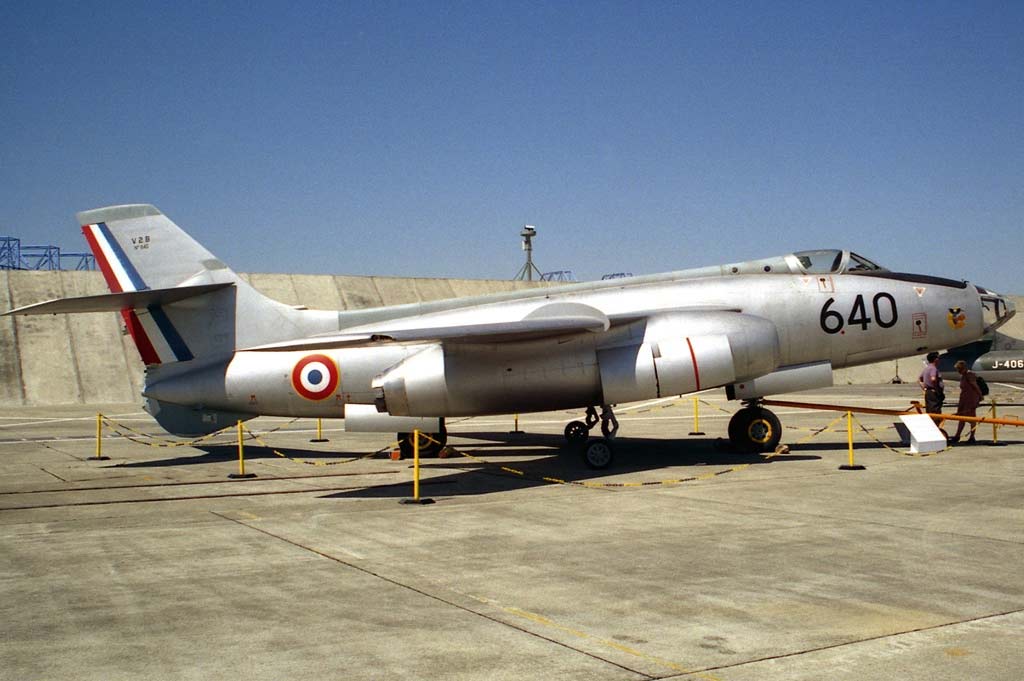The Vautour, a French twin-jet fighter-bomber, was notable for its versatile roles in interception, bombing, and all-weather capabilities.
In brief
The Sud Aviation Vautour, a multirole aircraft developed in the 1950s, was a significant contribution to the post-WWII jet era. Designed as a part of France’s efforts to rebuild its aerospace industry, the Vautour served in three main variants: interceptor (Vautour II N), bomber (Vautour II A), and all-weather fighter (Vautour II B). Equipped with two SNECMA Atar turbojet engines, it demonstrated considerable speed and range, making it suitable for various military roles. Despite a relatively short operational lifespan, the Vautour was deployed effectively in several conflicts, most notably by Israel. Its design reflected the transitional period in aviation, where versatility and performance were paramount in the era of jet-powered flight.
The Sud Aviation Vautour symbolizes the advancement and versatility in jet aircraft design during the Cold War era.
History of the Development of the Sud Aviation Vautour
In the early 1950s, amidst the backdrop of the Cold War and an arms race, France sought to rebuild and modernize its military capabilities, including its air force. The Sud Aviation Vautour was a response to this need, designed to fulfill multiple roles in the French Air Force.
Developed by Sud Aviation, a leading French aircraft manufacturer, the Vautour was intended to serve as a bomber, all-weather interceptor, and reconnaissance aircraft. This multipurpose approach was driven by the strategic requirements of the era, which demanded flexibility and adaptability in military assets.
The program was initiated in the early 1950s, with the first flight of the prototype occurring on October 16, 1952. The Vautour was a reflection of France’s determination to establish a self-reliant and innovative aerospace industry post-World War II.
The aircraft did not receive a specific NATO nickname, as it was primarily operated by the French Air Force and later by the Israeli Air Force.
Design of the Sud Aviation Vautour
The design of the Vautour was distinctive and advanced for its time. It featured a swept-wing layout, a mid-mounted wing design for improved high-speed performance, and two powerful SNECMA Atar turbojet engines, each generating approximately 9,700 pounds of thrust.
The aircraft’s dimensions included a length of 15.7 meters (51.5 feet) and a wingspan of 15.1 meters (49.5 feet). The design allowed for a substantial payload capacity, making it suitable for both bombing and interception missions.
Key advantages of the Vautour’s design included its versatility and all-weather capability, thanks to its advanced avionics and radar systems. However, the aircraft had limitations in terms of range and maneuverability when compared to some of its contemporaries.

Performance of the Sud Aviation Vautour
In terms of performance, the Vautour was capable of reaching a maximum speed of Mach 0.9 (approximately 690 mph or 1,110 km/h) and had a service ceiling of 13,000 meters (42,650 feet). Its range was around 3,300 kilometers (2,050 miles), enhanced by its in-flight refueling capability.
When compared to other aircraft of its era, such as the American McDonnell Douglas F-4 Phantom II, the Vautour was less powerful but offered a unique combination of roles that few aircraft could match.
Military Use and Combat of the Sud Aviation Vautour
The Vautour saw significant military service, particularly in the Israeli Air Force. It was used in a variety of roles, including ground attack, interception, and reconnaissance. The aircraft was armed with cannons, and it could carry a range of munitions including bombs, rockets, and later, air-to-air missiles.
The Vautour’s combat history includes participation in the Six-Day War in 1967, where it was used effectively in ground-attack missions. Despite facing more advanced aircraft, the Vautour proved its worth in combat scenarios.
The aircraft was not widely exported, with Israel being the primary foreign operator. The Vautour was eventually phased out in favor of more advanced aircraft, such as the F-4 Phantom II and the Dassault Mirage series.
The Sud Aviation Vautour stands as a testament to the innovation and adaptability of post-WWII French aerospace engineering. While it may not have been the most powerful or longest-serving aircraft, its versatility and multirole capabilities significantly contributed to the evolution of military aviation. The Vautour’s legacy lies in its role as a transitional aircraft, bridging the gap between early jets and the more advanced fighters that followed.
Back to the Fighter Jet section.